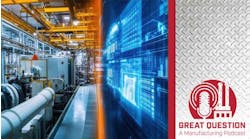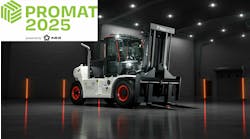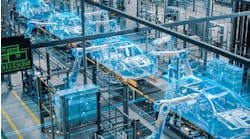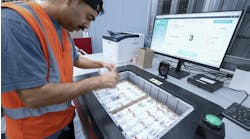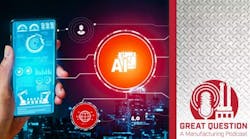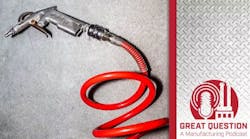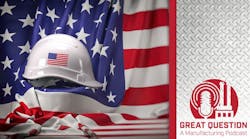Latest from Software & Computers
Podcast: The Practical Guide to AI on the Factory Floor
What You'll Learn:
- The key differences between Generative AI (creates content) and Agentic AI (takes independent action)
- Real-world applications already transforming manufacturing, such as predictive maintenance, smart robotics, and enhanced cybersecurity
- Major implementation challenges, including data privacy, workforce adoption, and cost considerations
- Practical strategies for successful AI adoption, from starting small to establishing governance frameworks
Artificial Intelligence (AI) is rapidly moving from a futuristic concept to a practical reality on the factory floor. But navigating the different types of AI and understanding their real-world impact can be challenging. In this episode of Great Question: A Manufacturing Podcast, I offer a practical guide to AI in manufacturing. Tune in to hear about current applications—from predictive maintenance and smart robots to enhanced cybersecurity and R&D—the key challenges like data security and workforce adoption, and actionable recommendations for implementing AI effectively in your operations.
Below is an excerpt from the podcast:
There's no doubt about it, artificial intelligence is really shaping this decade. It's popping up everywhere, across practically every industry, making things more convenient and opening doors we probably haven't even thought of yet. Now, for manufacturing, we've already seen huge leaps in efficiency thanks to Industry 4.0 and automation, right? Well, AI is really the next big wave. In fact, Tom Coshow over at Gartner predicts that by 2028, AI agents – not people – will be making about 15% of routine business decisions all on their own.
That's a huge shift, especially for manufacturing. But to really grasp how AI will achieve this on the factory floor, we first need to get clear on what we mean by 'AI'. It's not just one thing. You've probably heard terms like 'Generative AI' and 'Agentic AI' thrown around, alongside the machine learning many are already familiar with. Let's break down what these different types are and how they fit into the manufacturing picture.
So the big terms you keep hearing are Generative AI and Agentic AI. And it's important to know they're not the same thing.
Before these newer types hit the headlines, many in manufacturing were already using AI, specifically machine learning. Think of machine learning as being focused mostly on prediction – it looks at data, finds patterns, and uses rules we give it to solve specific problems. You see it in predictive analytics, understanding language—that's natural language processing or NLP—and even some basic autonomous systems.
Then you have Generative AI. It also learns from data, but its main job is to create something new based on those patterns. This is the AI that writes text, generates images, maybe even composes music, or designs product models. Think ChatGPT, Claude, DALL-E, Midjourney—those tools that exploded onto the scene? That's Generative AI. It's great for mimicking human-like creative work and can be a real time-saver.
Now, Agentic AI is built to interact with the world around it, make decisions, and actually do things to reach a goal—all by itself, no human constantly telling it what to do. That's a key difference from Generative AI, which usually needs a human prompt to get started.
For Agentic AI, think about a self-driving car figuring out traffic based on its sensors, or a robot arm in a warehouse picking and sorting items on its own, or even a smart assistant that manages your calendar without you asking. These systems use sensors to 'see' or 'feel' their surroundings, algorithms to 'think,' and actuators to 'act'.
The core idea with Agentic AI is that it has a goal. It doesn't just react; it considers its objectives and makes choices to get there. This is the type of AI people sometimes joke about taking over—because it can act independently. That independence naturally brings up serious questions about ethics and accountability. Like, who's responsible if it messes up? How do we ensure it stays aligned with what we want it to do? Developers are definitely grappling with this, building in safeguards to keep things on track.
About the Podcast
Great Question: A Manufacturing Podcast offers news and information for the people who make, store and move things and those who manage and maintain the facilities where that work gets done. Manufacturers from chemical producers to automakers to machine shops can listen for critical insights into the technologies, economic conditions and best practices that can influence how to best run facilities to reach operational excellence.

